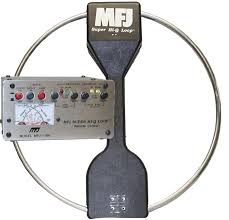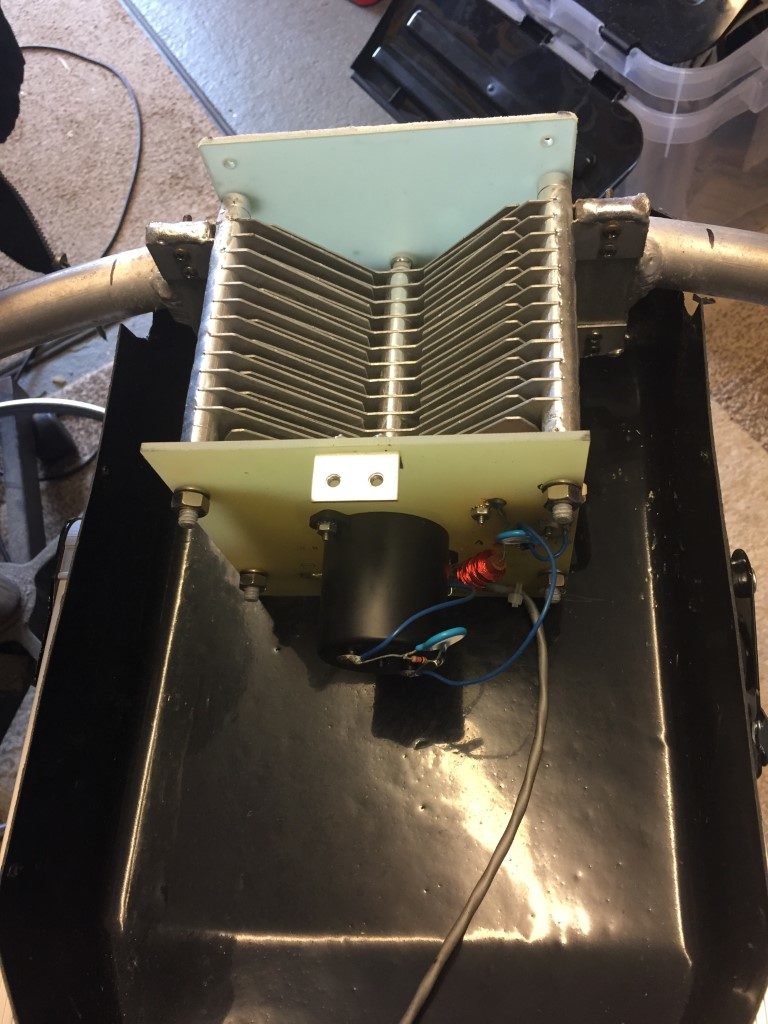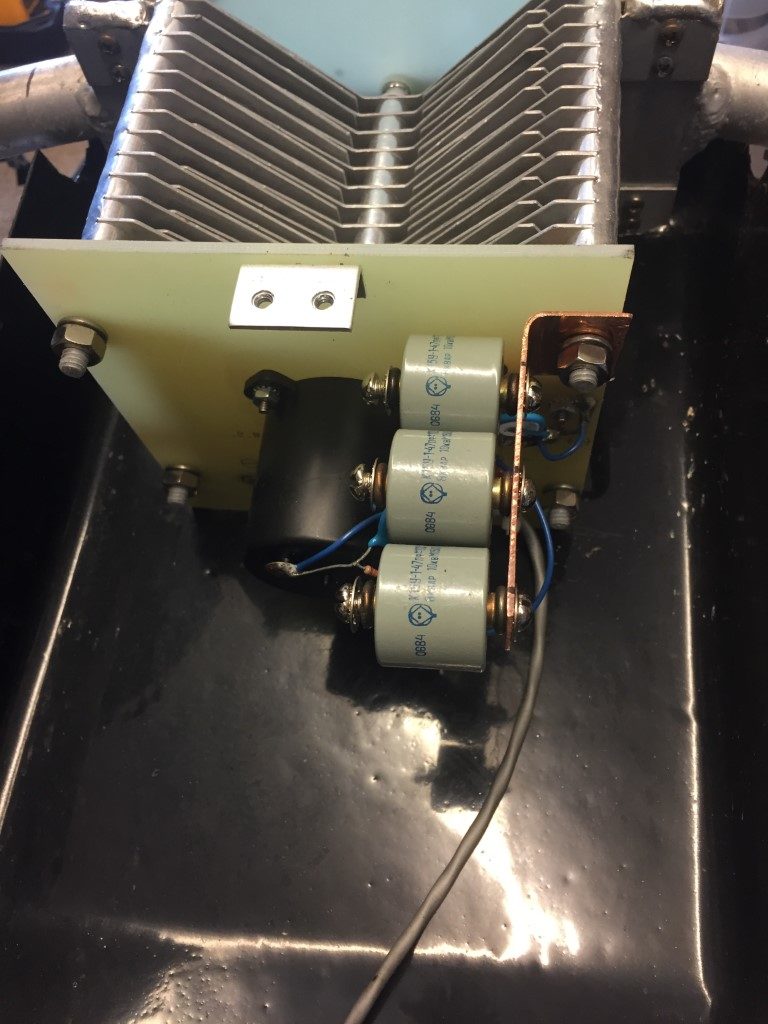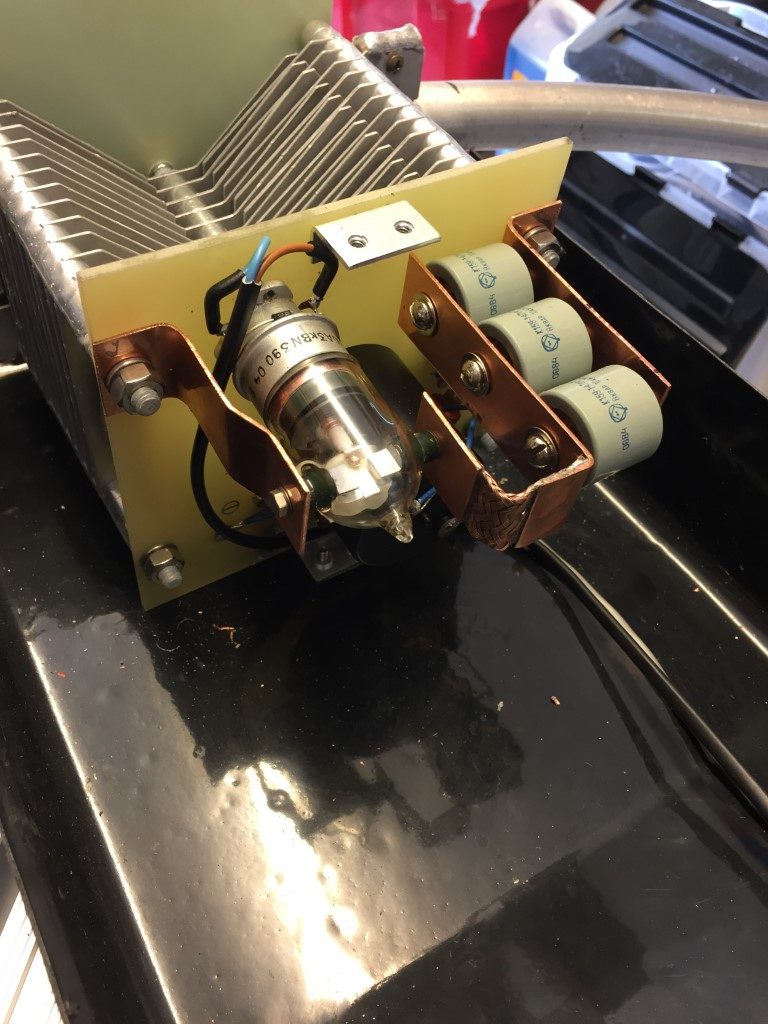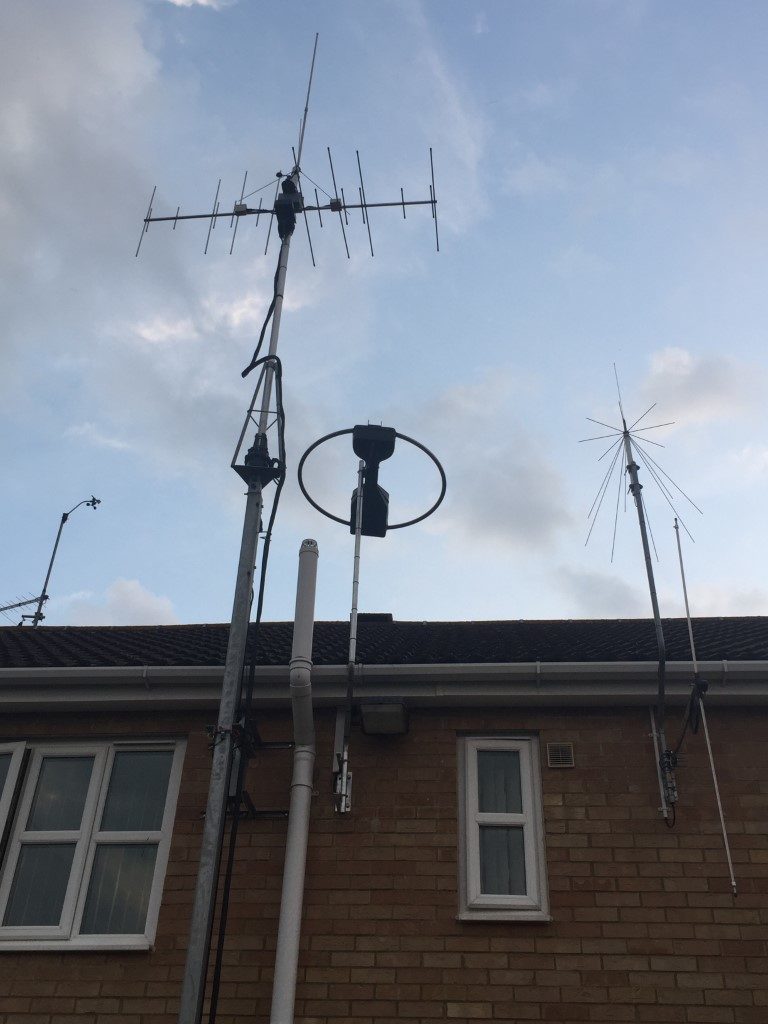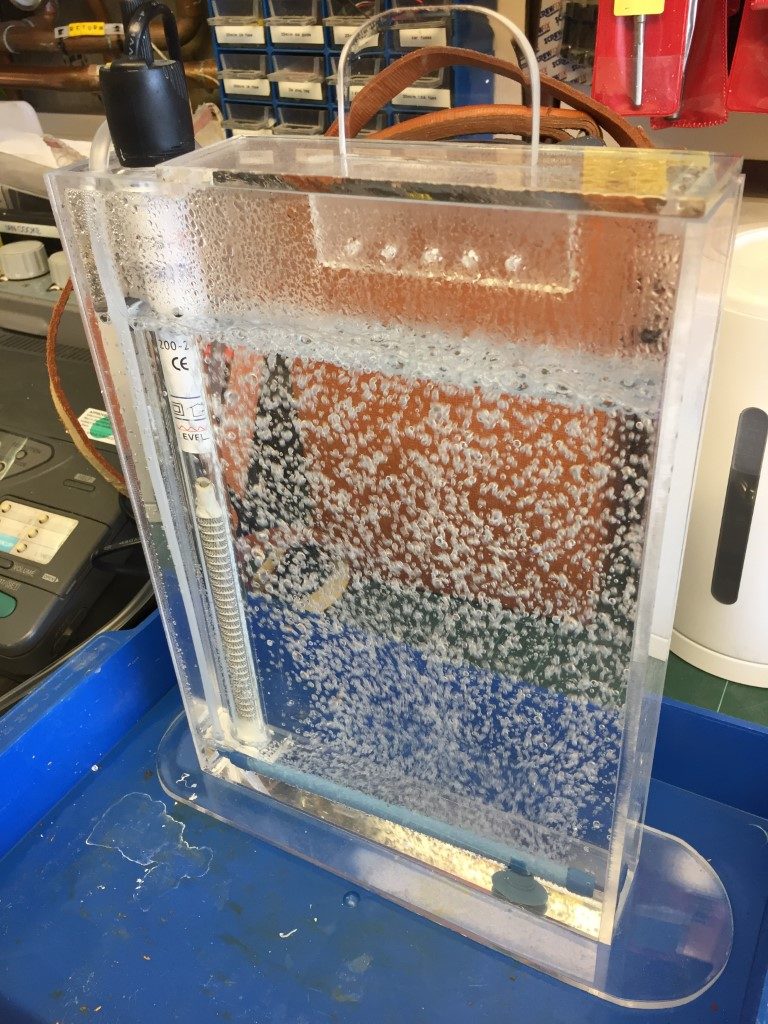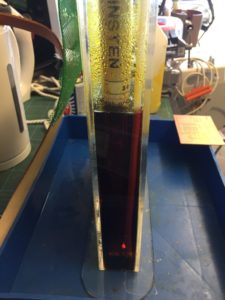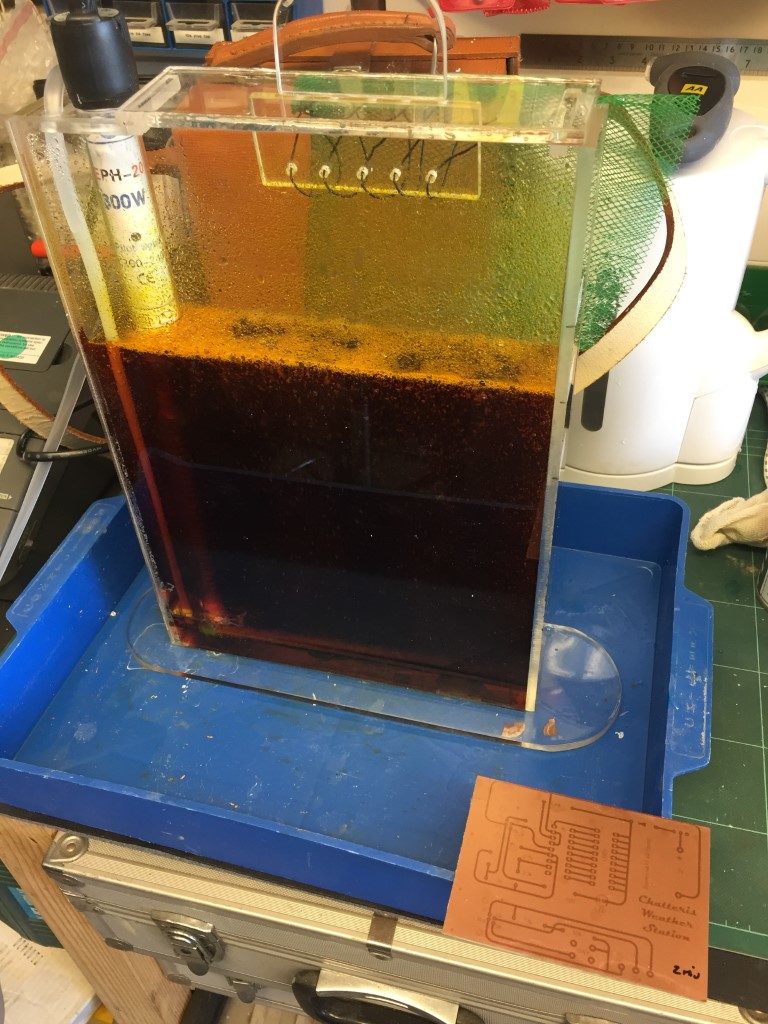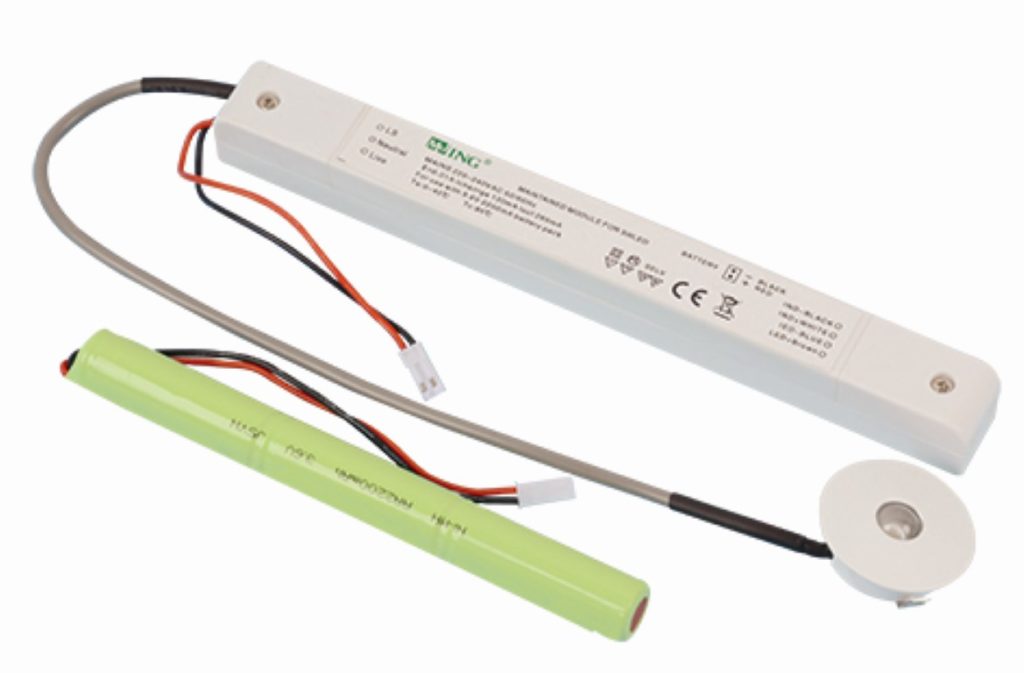
I saw a very similar discrete emergency light fitting recently and thought that would be a good idea over the stairs at home, looking on eBay I saw the above unit (MJ-LED-DZ09 by Zenergy) for £14.95 and bought one.
Prior to use, the instructions recommend charging the battery for no less than 24 hours before use as it comes discharged, this I did.
The LED light housing is really neat, it requires a 32mm hole (1 1/4″) drilling to accept the light body which is held in the hole by spring clips on either side, the electronics are in a low profile enclosure and this will easily pass through the 32mm hole.
Installation was very simple, I marked the center of the ceiling over the stairs, using a 32mm hole saw, checking that their wasn’t any joists or obstructions in the loft above the ceiling before drilling.
To stop plasterboard dust going everywhere whilst drilling the hole, I used a plastic fast food container as a ‘dust catcher’.
To make this, I cut a hole in the container so that the hole saw shaft passed through the container into the chuck, this allowed me to hold the container steady whilst drilling the hole at slow speed so that all the dust was trapped in the container.
After pushing the electronics enclosure through the hole, I used decorators caulk around the inside lip of the LED light, before pushing the light into the hole, the reason for the caulk was to form a decent seal to stop any draft marks appearing around the fitting at a later date.
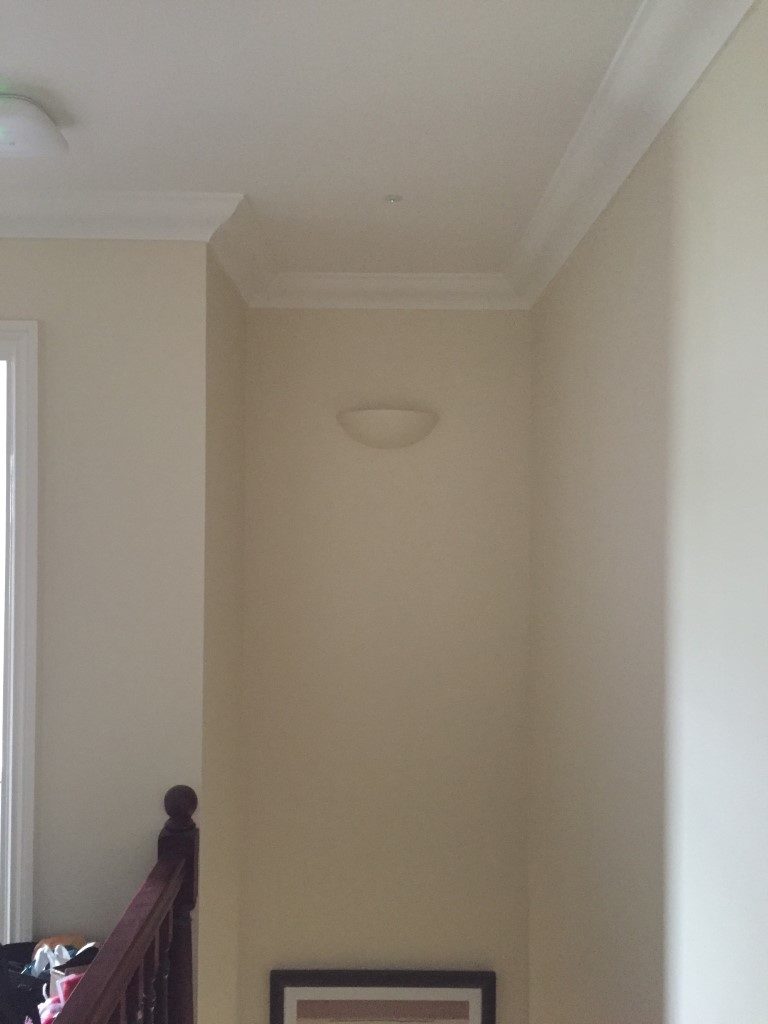
In the loft, I connected the emergency light 230v power to the upstairs lighting circuit (after isolating the supply!), when the power was turned on, the battery was then plugged into the unit ready for testing.
With the power on, a tiny green healthy LED is lit, when the power is off, the green LED goes out straight away, and within 2 seconds, the main white escape LED lights, I assume the delay is to avoid and short duration blips bringing on the main LED.
The light from the unit is very bright and cool white is colour.
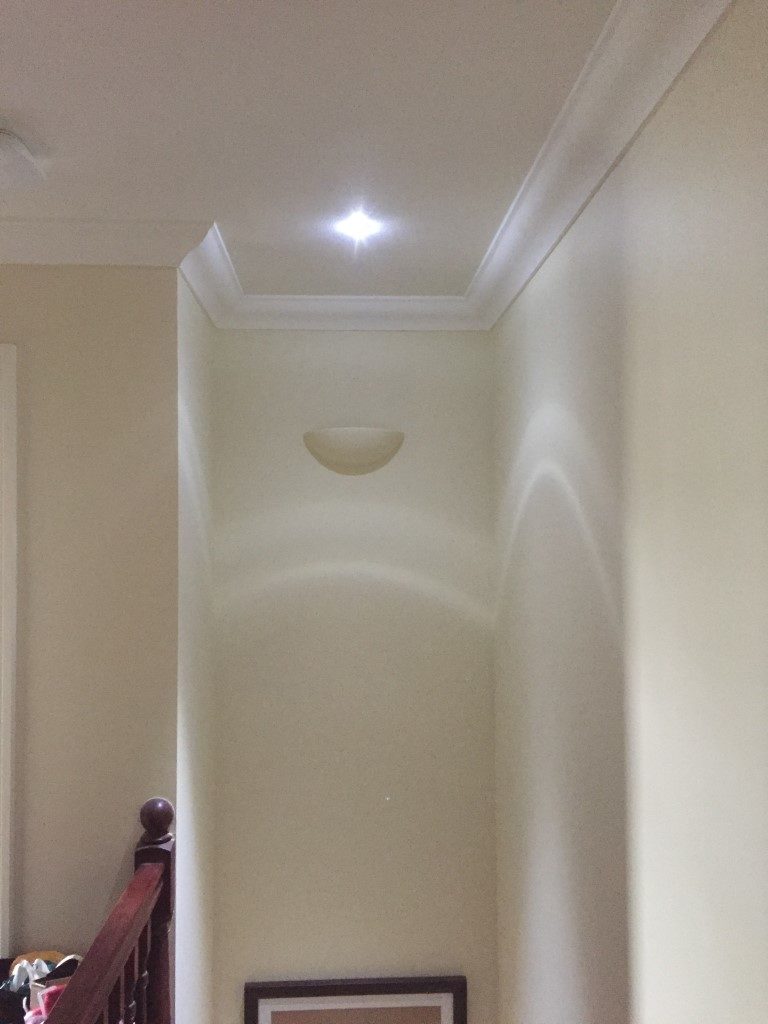
Quick Details from Web Site
LED – 1 X 3W LED
Material- Poly Carbonate for conversion body & aluminum LED body
Mounted – ceiling mounted
Life time of battery – 4 years
Light Output – (Emergency) 170lm
Lamp protection – over charge and discharge protection
LED indicator – Green indicator
Charging current – 90mA
Convert voltage- 155V AC
Discharging current – 500mA
Discharge duration – 3 Hours
Spec of battery- 3.6V 2200mAh NI-MH Batery
Packing – 38.5 x 35x 32.5cm 50pc/ctn
IP Rating- IP20
NO.:MJ-LED-DZ09
Application:
The series use for emergency lighting. The unit will provide 3W maximum output power at emergency mode.They are designed to be highly efficient and highly reliable, and with short-circuit protection; overcharge protection;over discharge protection and over temperature protection.
Important information for the installion:
The unit uses dangerous mains voltage,(220-240Vac, the converter will be with the emergency mode when the mains voltage is less than 65% of rated voltage) it should be installed by a qualified electricians only according to European safety standard or relevant nation regulations.
Connect the LED spotlight to the emergency LED converter with correct polarity according to the schematic drawing.
Connect the unit to AC power only after the wiring completed between emergency converter, battery and spotlight.
If the emergency converter is used for purposes other than originally intended or it is connected in the wrong way, no liability can be taken over for possible damages.
Specifications:
| Model |
Main power supply |
Main power cut off |
| MJ-LED-DZ09 |
LED Spotlight off, green indicator on |
LED spotlight on, green indicator off |
I’m really impressed with the product, and its another safety related home improvement which we hope is never needed in anger.
Update 6 June 18
Installed a Emergency light test switch rather than turning the lighting power off, these are just under £3.00 and include the ‘fish tail’ key.
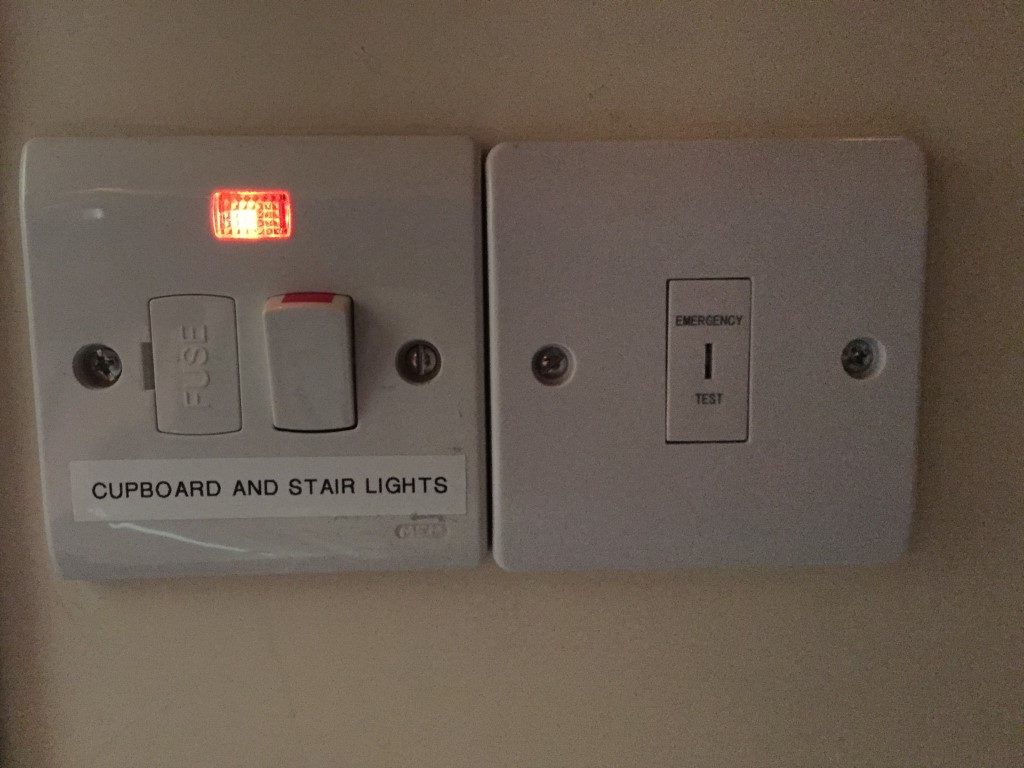
The switched fused connection unit is for a cupboard light and Hive light fitting which are fed with 0.75mm cable, the emergency lighting is fed with 1.5mm cable and is not fed from the fused side of the fused connection unit.


